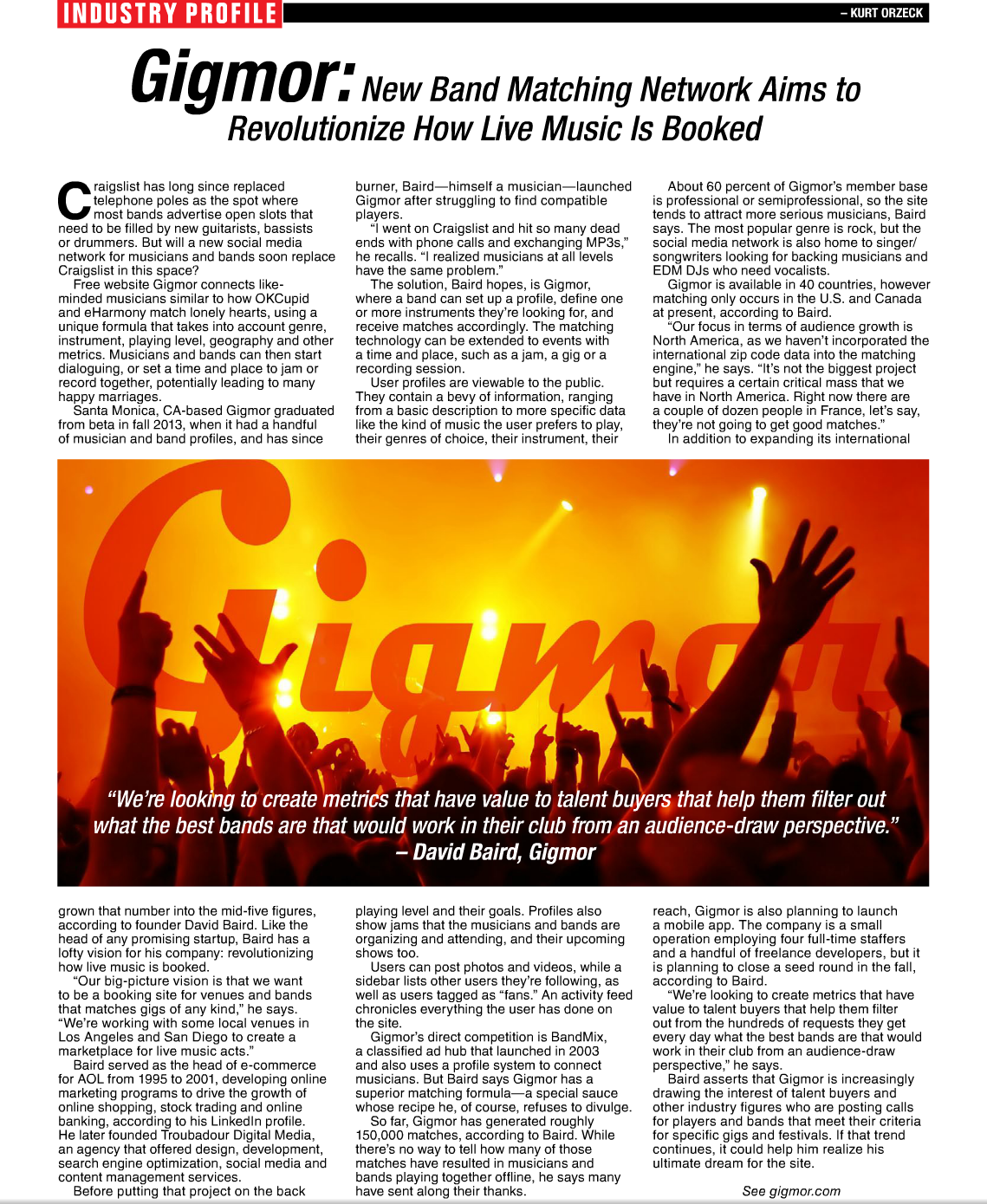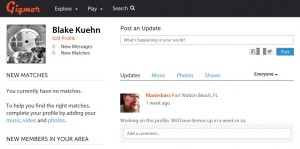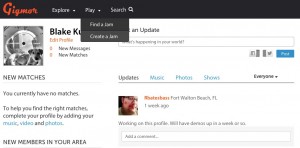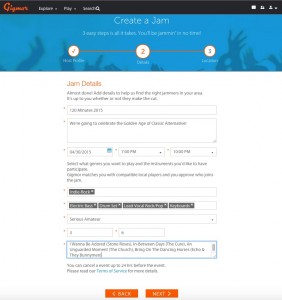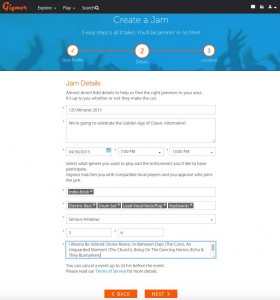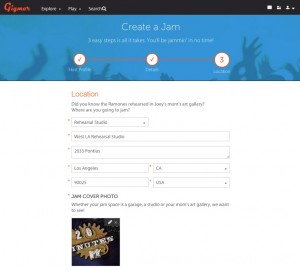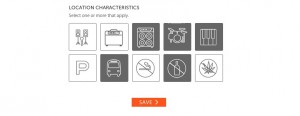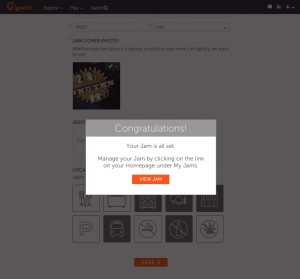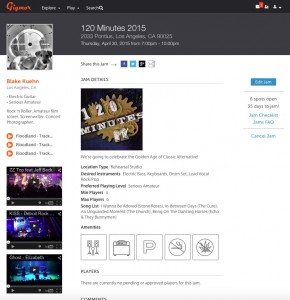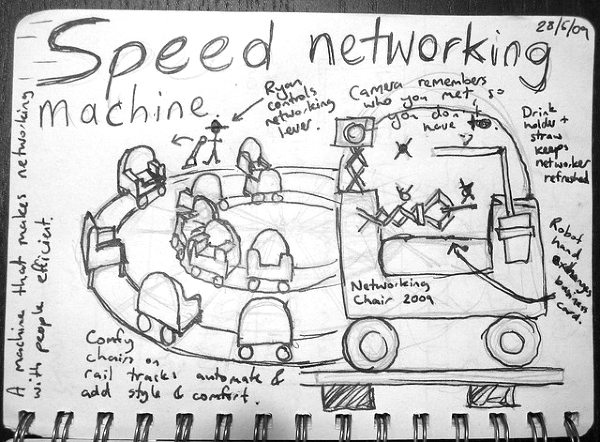Welcome to Gigmor Jams!
I can’t tell you how excited we are to announce the launch of Gigmor Jams – an easy way to manage your jam sessions, rehearsals, workshops and auditions within the Gigmor platform.
This is the first step in creating a best-in-class set of band management tools that will help you take your career to the next level!
To start, we’re going to launch in beta in the Los Angeles market. During this 3-4 week period, we’re going to put Gigmor Jams through its paces and fine tune it based on member feedback so we can make sure everyone has a first class experience when we launch it nationally in the U.S. and Canada.
Since this is a new piece of functionality, I wanted to provide a quick “How To Create A Jam” for everyone’s easy reference. It really is super simple – whether you’re creating a Jam on your desktop/laptop or mobile device. It even comes with pictures!
FYI – we’re working on a mobile app so we totally appreciate your patience. It’s coming, we promise!
How To Create A Jam
Log into Gigmor – told you it was easy!
Click ‘Play’ on the Gigmor toolbar at the top.
Select ‘Create a Jam.’
Complete Your Host Profile.
- The information will be auto-filled from your Gigmor profile but this is your chance to make sure your profile is complete and up to date. Make sure you’ve posted some music!
Hit ‘Continue’ at the bottom of the page.
Jam Details
You’re halfway home. Once you’re done, hit ‘Next’ at the bottom.
Fill out your ‘Location Details.’
Add in some “Location Characteristics.” In other words, include the information that you feel is important for having a successful Jam. In my case, I’ll provide the PA, the guitar amp – there is parking at the rehearsal studio – and if you like to smoke whatever, I don’t care, but I have sensitive lungs so I prefer to jam without hacking up a lung.
Hit ‘Save’ at the bottom when you’re done.
Boom – you’re done!
Have fun and if you have any questions or comments, hit us up at jams@gigmor.com!
Jam on!
Team Gigmor
The biggest mistake people make when they are networking is not selling themselves. The sad reality is people are always looking to get noticed, but nobody wants to give back. Let me tell you a story to illustrate this point.
You have two people named Charlie and Sarah. Charlie is a good musician with plenty of talent. He knows he is good and just wants to be recognized for his talent and skill. Sarah is also a musician. Let’s say they are both guitarists.
Charlie has been asked to play with other bands; but really he knows he is a great musician and people should want to play with him, or at least invite his band to open for another band. The biggest frustration is Charlie has great talent and sees other musicians around getting more popular. Charlie has the skills but what is going wrong?
Sarah, on the other hand, has talent, but she also isn’t stuck up about how good she is. She wants to be even better, so how does she go about this. Sarah calls other bands that she has become friends with. She asks them if they need any help or would want to collaborate. Sarah is continually searching for musicians that she aspires to be like and tries to figure out how to work with them. This helps her grow as a musician, but she is secretly building a network.
Over time, Charlie has become jaded and resentful. He knows he should be playing with other bands, but wonders when the phone is going to ring for his chance. His life has not changed and he continues to do what he has always done; playing gigs when they pop up and doesn’t seem to be gaining any ground.
Sarah, on the other hand, has cultivated a network. When a friend is playing a show, they are now asking if her band wants to open. Sarah continues to water the seeds of these friendships. Finally, she starts to book some shows of her own. As here yelling fan base continues to swell, she is now asking bands to open for her.
What this story illustrates is that you get out what you put in. The music industry is competitive. What helps are connections and networks. These connections don’t show up overnight, they get cultivated. So, below is a technique written by Shaun Letang from Musicthinktank.com (By the way, awesome technique Shaun).
The Ladder Method.
BlowUpLadder Method – Collaboration.
Your goal is to create a network of musicians that will provide a launching point for musical success.
- Start out by making a list of other musicians in your genre that you would have access to.
- Rank these artists on how popular they are. You can make a list that has artists on multiple levels, creating a tiered system. Typically the top of the list will be very busy and not have time for any new up and coming talent. But, this is where the secret sauce is. Pick the tier that you rank on. Now, look at the level above you and these are the musicians that you want to get to know and play with.
- This is the fun part. Go around, check out their shows, find out where they hang out or try to get a hold of them through email or social media. On the first contact, don’t approach them and ask, “Hey, can I play with you?” This rarely works. The key is to use some simple psychology to get them excited to help you.
On your first encounter, get to know them. You want to strike up a conversation about them. This gets people excited and thinking “Hey, this persons really cool.” The first trick is to show genuine interest in who they are. Ask them questions that normal fans would not ask. This is called the trench technique. You want to start off by asking surface questions. Then, you will slowly ask deeper and more meaningful questions. Check out the below example:
You: Hey, you really rocked up there. That was awesome. Good job!
Rocker: Thanks!
You: This might sound crazy, but can I ask you a question? (Get permission to ask a question. This will prevent them from getting upset at you for asking a question because they agreed to it).
Rocker: Umm sure? (They might be confused, but don’t worry. Just keep rolling with it).
You: I like your [pick a song you just heard them play]. That was really great when you [describe a specific part of the song in musician terminology], I totally enjoyed it. Did you write it?
Rocker: [They might give you a funny look, but you just gave yourself credibility asking a question that requires more thought than the average question]. Yes, I did. Can’t believe you knew what I was going for.
You: No problem. How did you come up with it?
Rocker: Well… [blah blah blah]
Congratulations! You just got someone to like you. The keys: No matter what they say, always try and direct the conversation back toward them talking about themselves. If they ask you a question, that is fine, but answer it as quickly as possible and continue to get them speaking about themselves. This will work wonders and show that you are truly interested in them.
Now, before the conversation is over, ask them for one last thing. Explain that you are really interested in them and think they are in a successful musical place that you would like to attain someday [-this appeals to their ego-]. Then ask them if they would be willing to help you. Talk quickly about your musical background and say, “I would really appreciate an opportunity to jam with you sometime.” [Now, don’t say a word. Wait and let them speak. Your heart will be pounding, you might feel sweat on your palms – it’s okay, Just make sure they either give you a yes or no.] If it’s a yes, you know it’s worth pursuing. If it’s a no, don’t worry about it and move to the next person on your list.
Once you have played a show with several of these musicians, it’s time to move to the next tier of musicians. Remember this can take time but it is totally worth it. The major key is to keep at it and don’t let a “No” get you down. Once you play with one musician your efforts will combine for a snowball effect.
Next, find out how to use Bicycle Marketing to build an audience and build a swell of fans.

